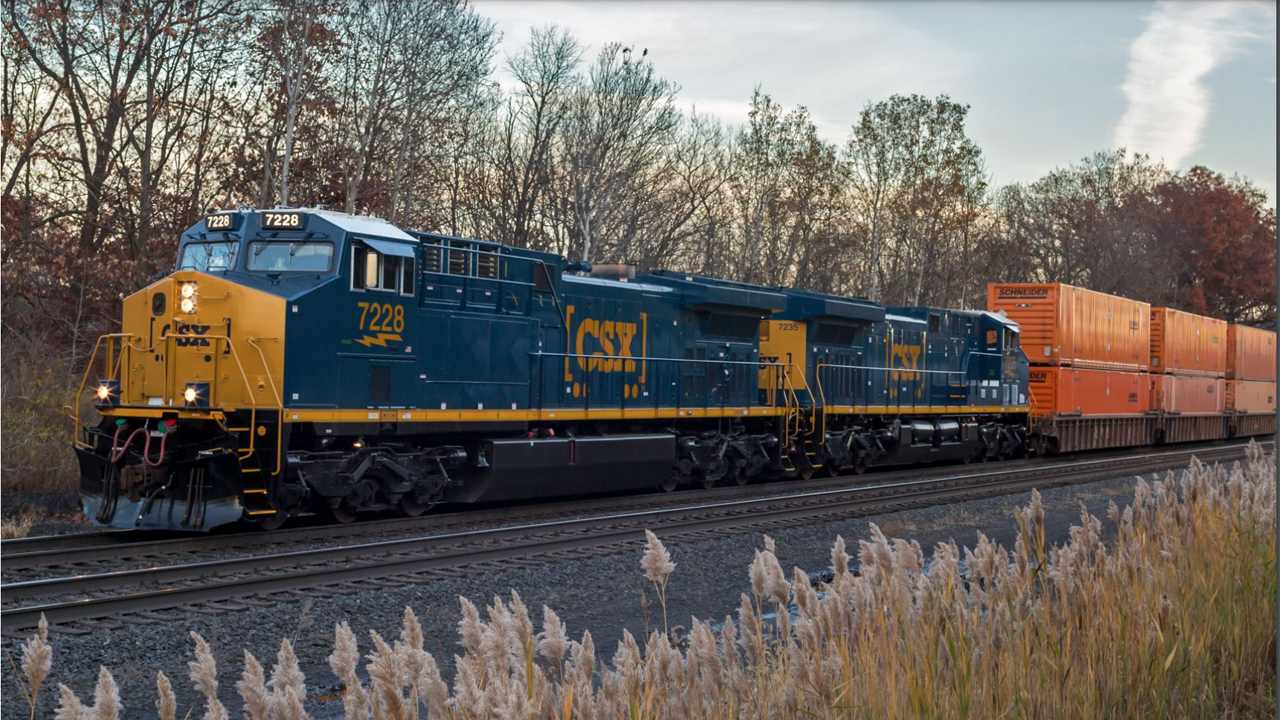
CSX Launches Chatbot Feature to Streamline Real Estate Inquiries
Written by Carolina Worrell, Senior Editor
CSX announced Feb. 16 that it has launched an innovative copilot chatbot feature on the Real Estate section of its official website, designed to assist customers with inquiries related to utility permits.
Named Chessie, in recognition of Chessie The Railroad Kitten, the iconic cat character who was used as a symbol of the Chesapeake and Ohio Railway (C&O) and appeared in passenger ads from 1933 to 1971, the chatbot is available around the clock and “provides immediate responses to common questions, ensuring customers have access to vital information whenever they need it,” according to CSX.

According to the Class I railroad, the CSX Real Estate team processes approximately 3,000 utility permit requests annually. Recognizing the need for a more streamlined approach to handle routine inquiries, the team introduced Chessie. This AI-powered solution, CSX says, “is programmed to provide quick and accurate answers to recurring questions, thereby improving the overall customer experience.”
This new addition, the Class I adds, allows the CSX Real Estate team to devote more time to addressing complex issues with customers.
CSX says it is leading the way as the first U.S. Class I railroad company to implement a chatbot for utility permit support. Initially, Chessie will focus on predefined topics, aiming to deliver comprehensive responses to the most frequently asked questions.
The future development of Chessie will be guided by customer feedback. Depending on user needs and experiences, CSX says it may expand Chessie’s functionality across its entire website.
This initiative, the Class I says, “underlines CSX’s commitment to leveraging technology to improve customer service, making it easier and more efficient for those seeking Utility permits to access necessary information.”
Customers are encouraged to use the Chessie chatbot on the Real Estate page and provide feedback after each interaction to help CSX to continually improve its functionality.
Chessie The Railroad Kitten
The following is an excerpt from the Chesapeake and Ohio Historical Society on the history of Chessie The Railroad Kitten.

“In 1933, L.C. Probert, a C&O official charged with public relations and advertising, saw an etching in a newspaper of a cuddly little kitten sleeping under a blanket with a paw thrust contentedly forward. At the time, he was developing an ad campaign to popularize C&O’s new air-conditioned sleeping car service and hit upon the notion of using the kitten with the slogan “Sleep Like a Kitten and Arrive Fresh as a Daisy in Air-Conditioned Comfort” for the C&O passenger ads.

“Chessie’s first appearance on behalf of C&O was in the September 1933 issue of Fortune magazine, in an ad that carried ‘Sleep Like a Kitten’ as its slogan. Printed in black and white, the ad carried no reference to the name of the kitten. The original color etching from which the advertisement was taken is by Guido Grünewald, a Viennese artist who specialized in cats and other animals. It was purchased for $5 for the railway’s use.
“The C&O’s advertising agency built a whole campaign around the kitten and chose the name ‘Chessie’ from the railroad’s name. In 1934, the first ‘Chessie’ calendar was produced, with 40,000 copies distributed. Advertisements featuring Chessie appeared in most national magazines as well. Her popularity grew, as did her family. She got two look-alike kittens in 1935, and a mate, ‘Peake’ (from the railroad name as well – Chesapeake = ‘Chessie-Peake’), in 1937. Soon Chessie, ‘America’s Sleepheart,’ was the talk of the railroad world, and propelled C&O to the top ranks of rail advertising.

“In an era less complicated than our own, Chessie became the darling of millions, helped bolster the spirit of the depression-ravaged people, and then seeing them through the great conflict of World War II. Chessie led the way as ‘America’s Sleep Warden’ and gave up her Pullman berth for traveling soldiers.
“After the war, she returned to her passenger promotional work for the railway that had itself become widely known as ‘Chessie.’ After the takeover of passenger service by Amtrak in 1971, Chessie took on a new role, giving her name to the combined C&O, Baltimore & Ohio, and Western Maryland railways under Chessie System, and helped them sell their freight service.
“Today, Chessie no longer appears in timetables or on locomotives and rail cars, but she nevertheless is alive in the hearts of millions who grew up during her life’s work on the C&O and successor lines. Interest in her and her history is perhaps as great now as when she was the foremost advertiser of rail passenger service.”



